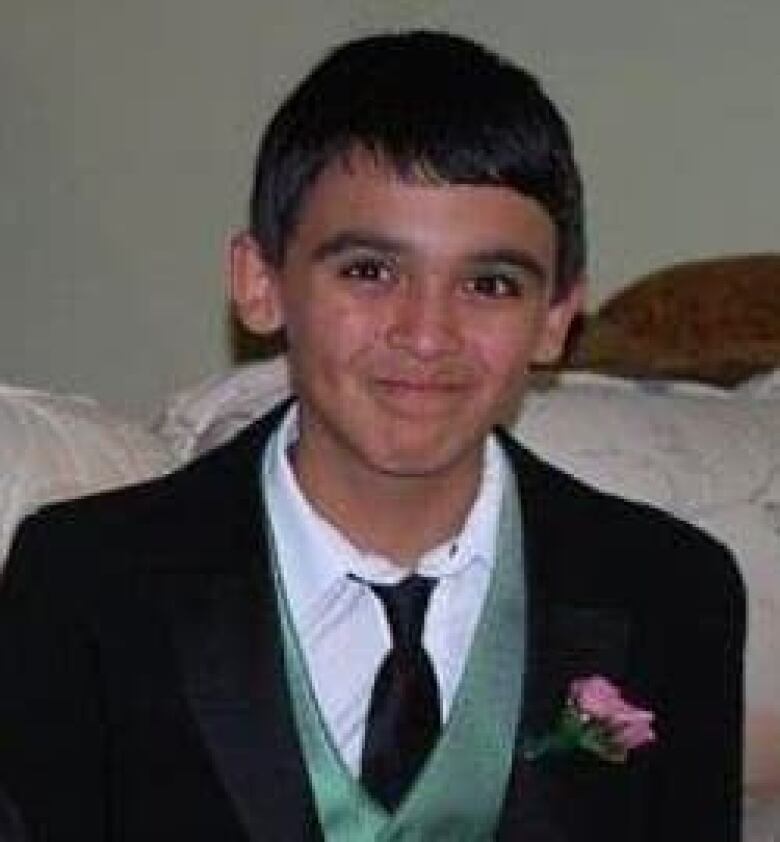Military defends Labrador search response for boy
Established procedures followed, Forces say
The Canadian Forces followed established procedures in the search for a missing 14-year-old Labrador boy, though a top military official says those practices may be reviewed.
"This may be something we look at in the future," Rear Admiral David Gardam told a press conference in St. Johns on Wednesday afternoon.
Gardam said he spoke with the boy's family for 40 minutes before addressing reporters.
"No one can imagine what it feels like to talk to a family in a grief-stricken state and say that nothing I can do, or could have done, would bring Burton back," he said. "This is a tragic loss and it was one of the most difficult things I've had to do in my career."
Burton Winters of Makkovik was reported missing on Sunday, Jan. 29.

Air support was not requested from the military until 9:40 a.m. the next day, Monday.
The Canadian Forces has two Griffon helicopters stationed at Goose Bay. But one was out of service for long-term maintenance. The other chopper was determined to have a mechanical problem that needed to be fixed.
Civilian helicopters joined the search soon after.
Under the current protocol, when the militarys help is requested but it cant respond for weather or other reasons, the onus is on the organization conducting the search to call back for assistance.
In the Winters case, that didnt happen again until close to suppertime on Tuesday, Jan. 31,more than 48 hours after Winters was last seen.
In between, the RCMP believed Winters plunged into open water, and the focus shifted to recovery efforts, though the search continued.
"The tracks led to the edge of the water," RCMP Supt. Andrew Boland said. "We were operating with a part of the search believing that the snowmobile could have gone into the water, and into the ocean."
But when Winters' snowmobile was found on the ice, everything changed, and the military was called back in.
Secondary assets
Col. Mark Chinner, who is in charge of air co-ordination in the Atlantic region, said the Griffon helicopters in Goose Bay are considered secondary search and rescue assets, whose main role is for training purposes.
The Griffons, he said, are used when primary assets are not available.
Those primary response aircraft are Cormorant helicopters located at Gander and Greenwood, N.S., along with a C-130 Hercules based in Greenwood.
"It made more sense to use the aircraft from Goose Bay at that point in time," Chinner said, noting that civilian helicopters were on the scene.
Meanwhile, Gardam said his primary mission is maritime and aeronautic search and rescue, and the decision not to use the Cormorants came down to a judgment call his judgment call.
"If I take that helicopter off my primary mission, to do this event when I know there are already helicopters there, and I get an event at sea, I can't respond to that event at sea," Gardam said.
"These are decisions I make every day. I dont make them lightly. But it is an issue of managing resources carefully in order to meet the needs of a very large area."












_(720p).jpg)


 OFFICIAL HD MUSIC VIDEO.jpg)
.jpg)



























































































